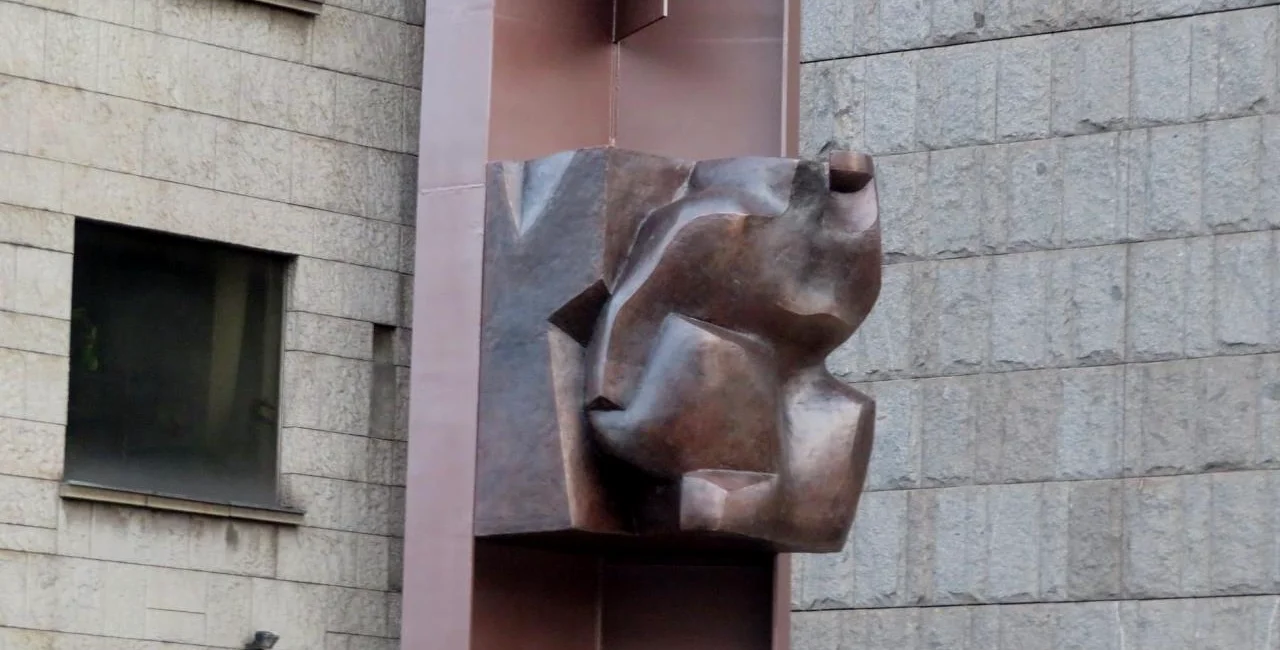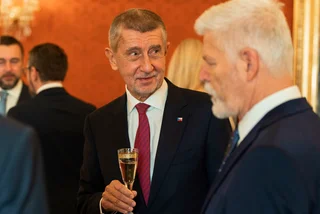Another memorial for student protester Jan Palach has been unveiled in Prague. The bronze sculpture called Flame (Plamen) is now on the 30-meter metal pylon outside the New Building of the National Museum in Prague. The pylon has been outside the former seat of the Czechoslovak Federal Assembly since the 1970s.
Palach, a 20-year-old student, set himself on fire in Prague on Wenceslas Square on Jan. 16, 1969, to protest against the government's complacency following the August 1968 Soviet-led Warsaw Pact invasion of Czechoslovakia. Palach died three days later.
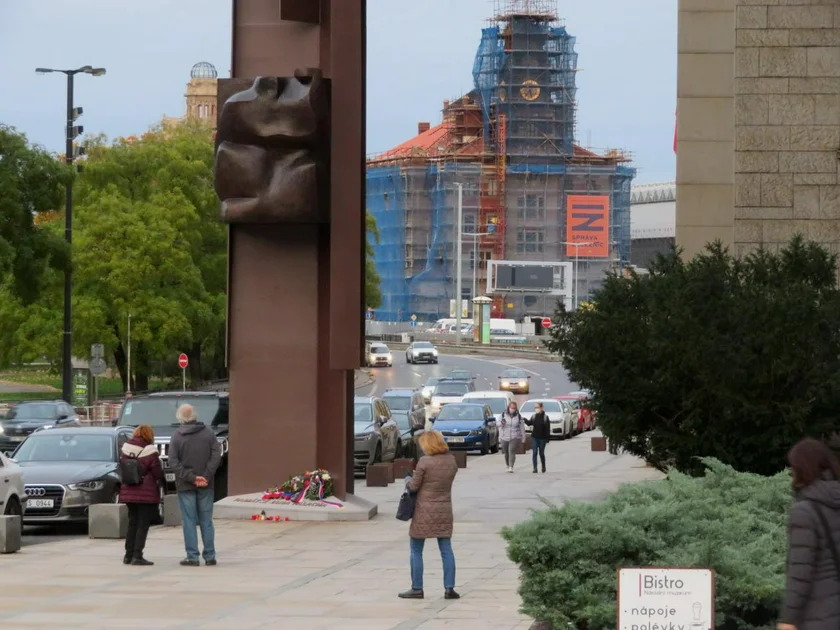
Culture Minister Lubomír Zaorálek (ČSSD) along with National Museum general director Michal Lukeš and the author of the Palach memorial, sculptor Antonín Kašpar, unveiled it on Nov. 17, the Struggle for Freedom and Democracy Day. The holiday marks the student demonstrations against communism in 1989 and against the Nazi occupation in 1939. Kašpar won a CZK 3.7 million competition to create the memorial.
“Today we commemorate the 31st anniversary of the Velvet Revolution, Struggle for Freedom and Democracy Day, but also the memory of all the heroes who sacrificed their lives for our freedom and ability to live our lives in democracy,” Lukeš said.
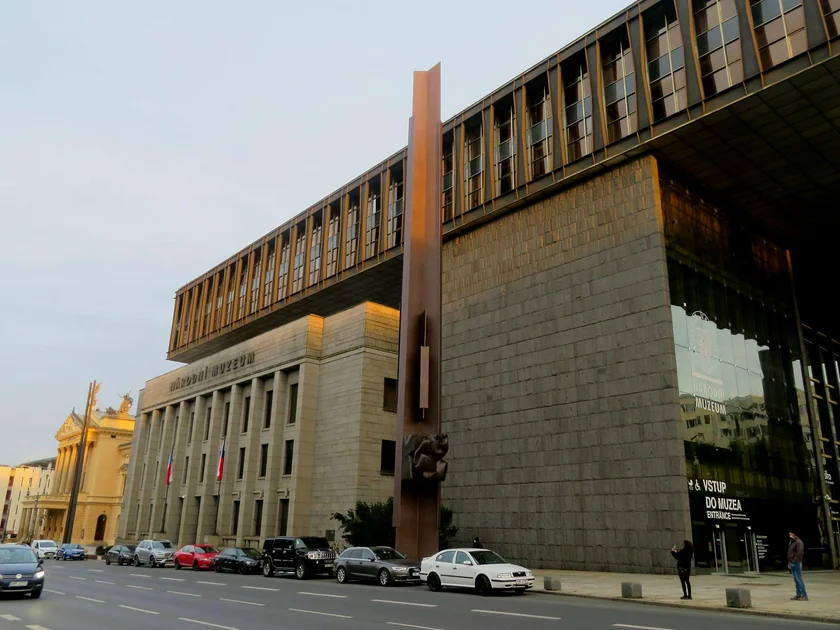
“Our country and its people are having a difficult time. That is why we decided to unveil the Jan Palach Memorial today, in compliance with all valid anti-pandemic restrictions, through broadcast TV and online. In order to honor all those who have earned our freedom in the past, we remind ourselves of its importance for the present and do not forget to protect it in the future,” he added.
The pylon was originally designed by architect Karel Prager, who planned the 1968–73 remodeling of the Federal Assembly. The slender steel pylon, designed in 1968, was meant to resemble a flame whipping in the sky, and was supposed to carry a granite sculpture by Miloslav Chlupáč called Flame.
After Palach’s death, Prager and Chlupáč decided to commemorate the already planned pylon to Palach, as it was just a few meters from the site where he set himself on fire.
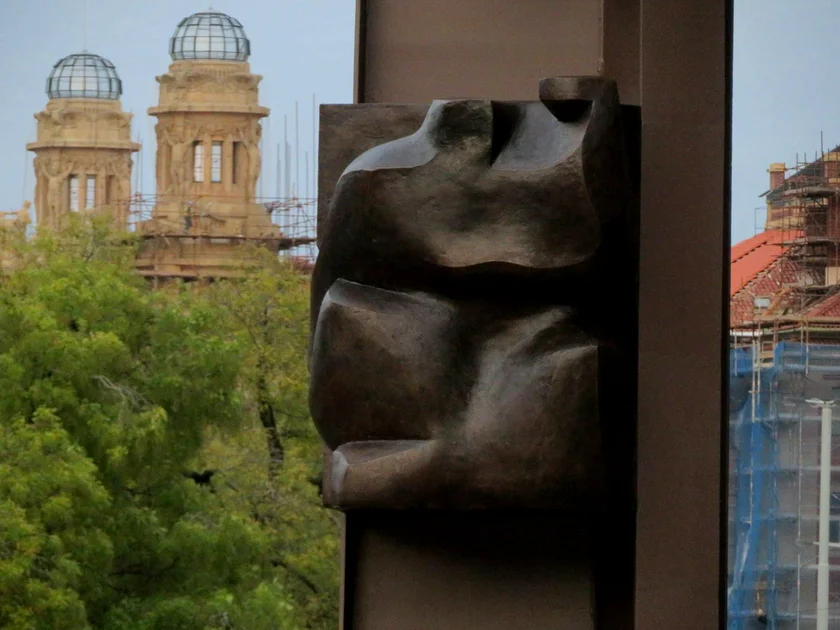
Chlupáč’s sculpture was never put on the steel pylon due an intervention by the Communist party, which decided to replace some of the art prepared for the Federal Assembly building. Instead, a stone block with the Czechoslovak coat of arms and two sentences from the constitution were placed in the space planned for Chlupáč’s Flame.
The significance of the monument was forgotten until 2018 when sculptor Antonín Kašpar, who was restoring the steel pylon, discovered documents in the archives of the National Museum on the renovation of the Federal Assembly building. The documents were prepared in 1991 by GAMA Architectural Studio and signed by Prager, who was the director of the studio at the time.
In this documentation, the pylon was already called the Palach Pylon and its completion was then proposed. “The pylon in front of the Federal Assembly building and its stone block were not completed with the sculpture Flame by sculptor Miloslav Chlupáč. The sketches of this sculpture have been preserved and it is necessary to complete a plaster model for its realization in a granite block on the spot. The inscriptions and the coat of arms alternately mounted on the stone block have already been removed,” Prager wrote in 1991.
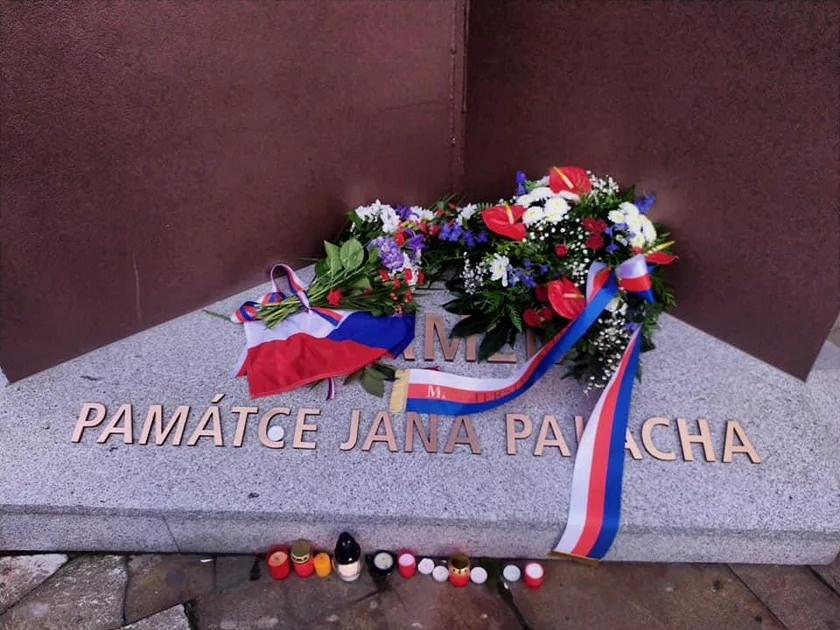
The subsequent remodeling, however, did not take place for unknown reasons. Prager passed away in 2001 and Chlupáč passed way in 2008.
New attention fell on the plan in 2018, on what would have been Palach’s 70th birthday. The management of the National Museum decided to complete the original plan. Then in 2019, when the Czech Republic commemorated 50 years since Palach’s death and the 30th anniversary of the Velvet Revolution, the first negotiations on the rehabilitation of the Palach Pylon took place with representatives of both authors’ heirs, restorers, representatives of the National Heritage Institute (NPÚ) and the Ministry of Culture.
Due to the weight of the originally designed stone block and the problem of anchoring it to the steel pylon, the original plan could not be carried out. After consultation with representatives of copyright holders and representatives of the NPÚ, bronze was chosen as the final material. Sculptor Kašpar then began work on the bronze version, using Chlupáč’s design for inspiration. A model of the original design is preserved in the National Gallery.
The completed work was presented to the public on Nov. 17, 2020, in front of the New Building of the National Museum, and was already drawing crowds of people who were leaving candles and taking photographs by that afternoon.
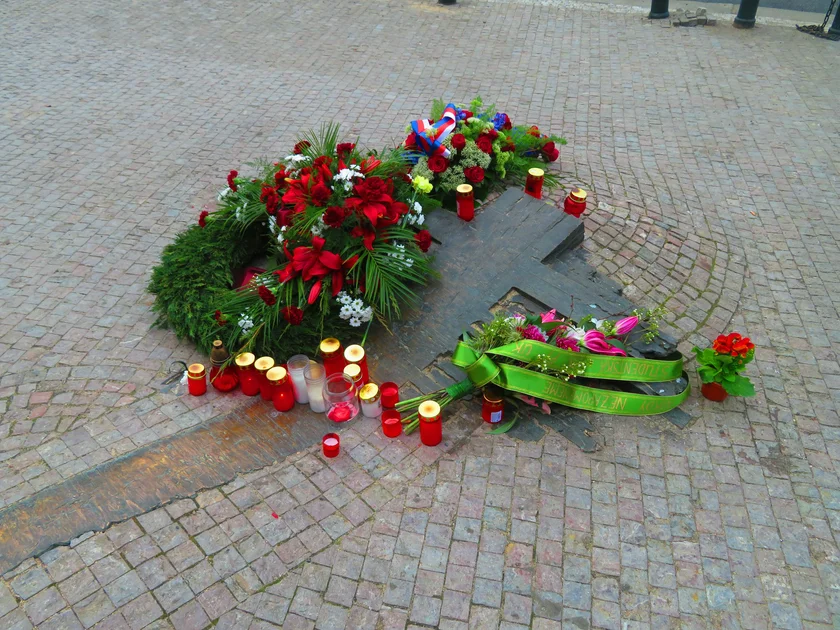
Prague now has six memorials to Palach. Three are in the vicinity of where he set himself on fire. In addition to the new Flame sculpture, there is a cross in the sidewalk front of the Historical Building of the National Museum and a plaque on Wenceslas Square.
The burnt-looking bronze cross, installed in 2000, marks the spot where Palach set himself on fire. It is by Barbora Veselá and architects Čestmír Houska and Jiří Veselý. On Wenceslas Square, a bit hidden in overgrown bushes in the median, there is a small etched black stone plaque dedicated to Palach and Jan Zajíc, another student who set himself on fire in 1969.
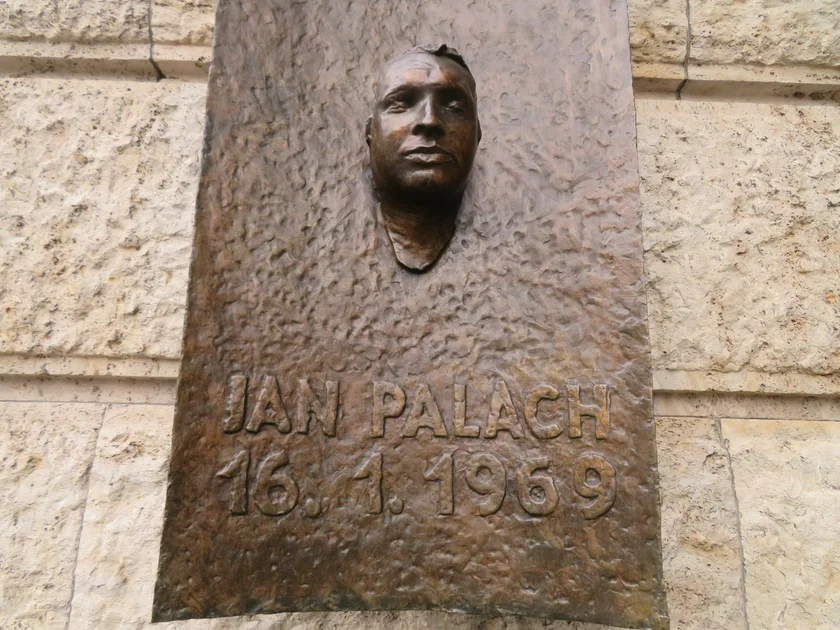
On the building of the Philosophy Faculty of Charles University, at náměstí Jana Palacha (Jan Palach Square), there is a bronze plaque with a copy of Palach’s death mask. The plaque is by sculptor Olbram Zoubek, who also designed Palach’s tomb in Olšanské hřbitovy in Prague 3.
Next to náměstí Jana Palacha at on Alšovo nábřeží is the House of the Son and the House of the Mother, two sculptures meant to resemble buildings on fire. They are by late American architect John Hejduk. They were installed in 2016, based on his earlier models. The houses, one polished and one rusted, symbolize Palach and his mother.
A street-art style mural of Palach and priest Josef Toufar is on the side of the dilapidated Borůvkovo sanatorium on Legerova Street. Both Palach and Toufar, a victim of a communist show trial, died at the hospital that was once located there. The mural by Otakar Dušek dates to 2014.
Last October, the National Museum opened the Memorial of Jan Palach in his family home in Všetaty, Central Bohemia, including a new modern building with an interactive exposition.












 Reading time: 5 minutes
Reading time: 5 minutes 